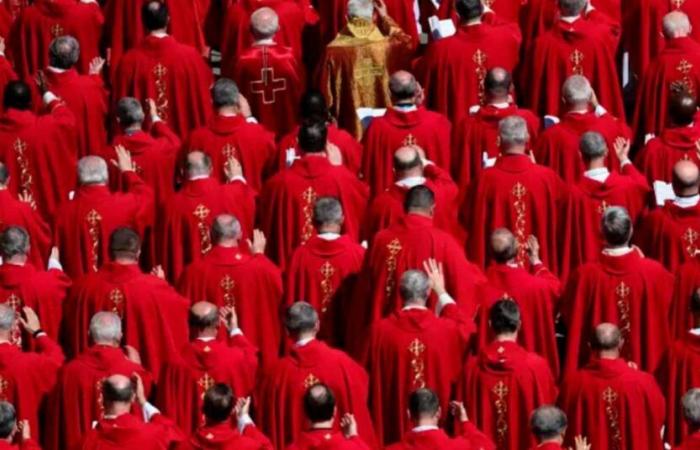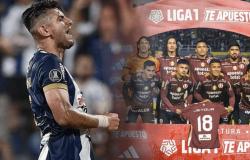The Vatican prepares for the conclave of May 7in which the successor of Pope Francis will be chosen. Already 133 Cardinals are in Rome y The Vatican enlisted the emblematic chimney of the Sistine Chapel where it is announced, through the white smoke, the new pontiff. Throughout history, this sacred rite of hundreds of centuries has been marked by The confinement, the mystery and some unusual anecdotes.
The so -called “Princes of the Church” will celebrate four daily votes: two in the morning and two in the afternoon, except the first day. And will burn the voting ballots in a stove to announce the result to the world: black smoke if they fail to reach the necessary majority of two thirds; White yes We have a pope. However, it was not always the case.
Cardinals who choose the new Pope will have an easier task than many of their predecessors, They endured Spartan conditions and sometimes they were locked up so long that some died. It is a meeting that goes back to the Middle Ages, when the idea of choosing a sovereign was a revolutionary idea.
And at the same time, it is full of mysticism because its participants swore secret for life.
A three -year -old conclave (and homeless)
The longest conclave in history lasted almost three years after the death of Clemente IV In November 1268, in the Papal Palace of Viterbo, near Rome. At the end of 1269, the cardinals agreed to lock themselves to try to achieve a decision and, in June 1270, the frustrated inhabitants withdrew the roof to accelerate the process.
His inspiration apparently came from the words of an English cardinal who assured that, without a roof, the Holy Spirit would descend more freely.
Teobaldo Visconti became Pope Gregory X in September 1271. Although it had been appointing Pope Gregory X for almost three years in the thirteenth century – the longest conclave to date -, Modern meetings usually last a few days. Both Francisco and his predecessor, Benedict XVI, were chosen after two days of voting. The last long conclave was in 1831, when more than 50 days were needed to choose Gregorio XVI. Since then, they have lasted less than a week. The longest of the twentieth century was in 1922, when Pius XI was chosen in five days (14 voting rounds). The last elections closed in two days: Benedict XVI needed four voting rounds in 2005 and Francisco, five rounds in 2013.
A pigeon decided who would be Pope
In 236, the Christian community of Rome debated possible candidates for potatoes, when A white pigeon perched on the head of a spectator, Fabian.
“At that time, everyone, as moved by a single divine inspiration, cried out with enthusiasm and with all my heart that Fabian was worthy,” according to Eusebio, a historian of the Church of the time.
But this blessing ended badly. The Roman emperor Decio persecuted him and executed 14 years later. In the early days of the Church, the Clergy and the Roman nobility chose the potatoes, but often the votes were rigged. One of the most infamous elections took place in 532, after the death of Bonifacio II, with “large-scale bribes of real officials and influential senators,” writes PG Maxwell-Stuart, in Chronicle of the Popes (Chronicle of the potatoes, for their Spanish translation). In the end, the chosen one was an ordinary priest, Mercury, who was the first Pope to change his birth name to that of John II.
In 1059, Nicolás II gave the cardinals the exclusive power to choose the Pontiff.
food ration by decree
In response to the chaos that led to his choice, Gregorio X changed the rules: he demanded that The cardinals gathered 10 days after the death of the Pope and ordered the food to grant them out progressively.
If there was no decision in three days, the meals would have a single main dish, of the two traditional in Italy. Five days, they would only have bread, water and wine, according to the book ConclaveJohn Allen.
Sealed windows and unbearable heat
The conclaves They were held for centuries in the apostolic palace of the Vatican And, since 1878, uninterrupted in the Sistine Chapel, which has already hosted others in the past.
The cardinals slept in the past in Catres within cubicles temporarily erected in the Apostolic Palace, With a bath for every 10 wandered, according to Allen’s book.
The windows were sealed, but, in August 1978, a revolt principle between the cardinals who asked to open them in the hot summer in the Vatican exploded. Juan Pablo II, chosen in a second conclave held in October of that year, then ordered the residence of Santa Marta In the Vatican gardens, where the cardinals stay now.
This residence, in which Francisco chose to live, has a hundred suites and about twenty simple rooms. But during the conclave, the windows are also sealed.
The confinement led some cardinals to death
The idea of locking the cardinals to accelerate the election dates back to the thirteenth century. The word conclave comes from the expression in Latin cum key, which is meaning “locked.” In 1241, seen that the election was extended, The Chief of the Government of Rome locked the cardinals in a ruins building and refused to clean the toilets or allow doctors to serve the sick.
According to Frederic Baumgartner in his A History of the Papal Elections (History of papal elections, for their Spanish translation), The cardinals only reached a decision when one of them died and the Romans threatened to exhume their body.
After 70 days, they agreed and Goffredo Castiglioni became Celestino IV. Currently, deliberations remain under strict secret, under penalty of instant excommunication. Cell phones and any Internet access are prohibited. The cardinals cannot read newspapers, listen to radio or watch television. Any contact with the outside world is prohibited.
Elected Pope without being cardinals
Technically, any baptized man can become a potato, but The last non -cardinal chosen as a pontiff was the archbishop of Bari, Bartolomeo Prignano, which became urban VI in 1378.
At that time, the cardinals, who were in Avignon (France), chose Urban VI as Pope. However, His choice was not well received by all the cardinals, who alleged that the election had been made under pressure and that the chosen person was not suitable for the position.
Urban VI was chosen by most cardinals, but many of them, especially the French, regretted their decision and They decided to name an alternative Pope, which resulted in the creation of a double papal line: one in Rome (Urban VI) and another in Avignon (Clemente VII), which gave rise to the Schism of the West.
Despite being an archbishop and not a cardinal, Urbano VI was chosen due to the pressures of the moment, and his papacy marked the beginning of a stage of great instability for the Church.
In practice it is almost always one of the cardinals, with only six exceptions in history.
Pío, Clemente, Juan: Why those names?
From Pío to Clemente, going through Paul or simplicio, The future Pope must choose the name by which the Catholic Church will direct, based on criteria such as admiration for a predecessor or a will to break.
The ritual secular of the conclave expects that the occupant of the Chair of San Pedro adopts a name immediately after being chosen. Where the name you want to be calledCardinal Dean asks in Latin to know his name of Pontiff.
Although in theory the potatoes can adopt their baptism name, The changes began in the year 533 with Juan II, who did not want to maintain his name, Mercury, for being that of a Roman and pagan God.
The last to keep his name was Pope Adriano VI in the 16th century. In recent times, the main reason invoked for the choice of name was the admiration for previous potatoes, with the exception of Pedro, the name of the founder of the Church and considered taboo.
In 2005, German Joseph Ratzinger adopted Benedict XVI for devotion to Benedict XV, the Pope of Peace during World War I.
Twenty -seven years before, The Polish Karol Wojtyla chose John Paul II as a tribute to Juan Pablo I, his predecessor, who died shortly before only 33 days of pontificate. The latter, the Italian Albino Luciani, was the first to take a compound name, to honor at the same time the legacy of John XXIII and Pablo VI. Pío is nevertheless the seventh name most used by a Pope in the history of the Church, only behind Juan (21), Gregorio (16), Benedict (15), Clemente (14), León and Inocencio (13), according to the official list of the Holy See. But there are other less common names such as simplium, zacarías or theodoric.






